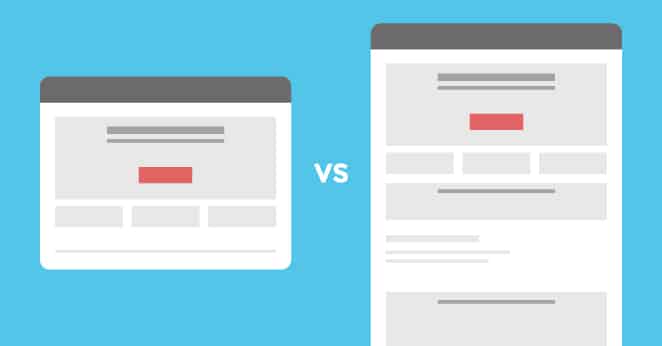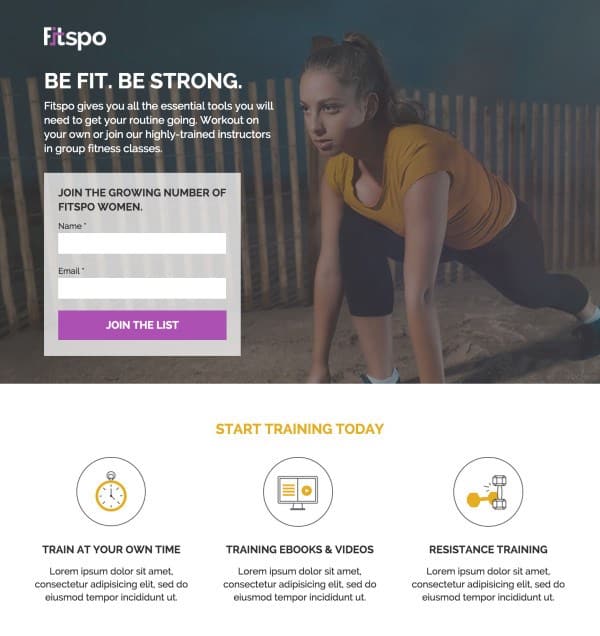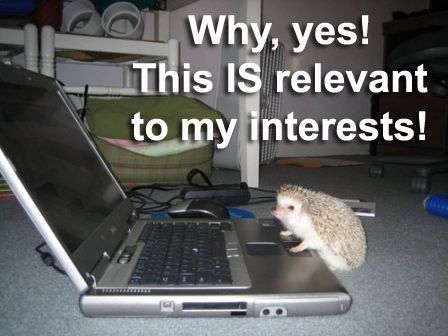How Much Content Does Your Landing Page Really Need?
by Andrew Maliwauki • September 1, 2015
Arguably the biggest difference between a company’s website versus their landing page is purpose. In the world of digital marketing and PPC advertising, it’s crucial to know when to use which in order to get the best quality leads driving your business.
Since targeted landing pages tend to be best for online marketing, it’s important to understand exactly how to get the most out of your landing pages. Generally speaking, you want your landing page content to be highly focused and relevant to the marketing that brought your potential client to the page in the first place. But, since you can’t afford to mince words, you need to know what you absolutely need to include on your page and what you can leave behind.
When asked what is the best amount of information to include on a landing page, the honest answer is “it depends.” With so many different products and services being advertised online, you have to constantly be aware of your specific audience and what they need to see in order to take the next step.
Since creating the ideal landing page can be a complex task, let’s go over a few helpful tips that can help you make the right choices for your landing page.
Page Length
Since I’ve started worked in digital marketing, I’ve created hundreds of different landing pages for clients in every industry imaginable. If there’s one thing I’ve learned from so many clients, it’s that there’s no one-size-fits-all formula for determining page length and what content to include on a page.
Testing is the name of the game in PPC and—if you do it right—a good series can nail down exactly what works best for your business.
Think About It From Your Customer’s Perspective
When creating a new landing page, put yourselves in your potential customer’s shoes: What needs to happen to make them feel comfortable picking up the phone, filling out the form, or hitting that click-through button?

A lot of this depends on what you’re asking of them. For example, if you have a page geared around an free eBook, keeping your page short and sweet is probably the way to go. On the other hand, if you are trying to get people to fill out a six-field lead gen form for your cloud hosting service, you’re probably going to need quite a bit more information about your product and why giving you all that information will be worth the person’s while.
In situations where you need more content to explain your product or service, it’s important to never lose sight of your page’s goal: simplicity.
Taking huge blocks of text from your website and hitting control + c is not going to solve your problems. In fact, it will only create new ones. When adding content to your page, keep it to short snippets of text and bullet-style blurbs. By summarizing your content to the bare essentials, you keep the viewer engaged and constantly scrolling through your page.
Visual Elements
No one likes to see just text on a page, so it’s important to complement your content with visual elements and other cues in order to break up the layout and keep it interesting.

One of the best ways to do this is to incorporate icons and other elements that visualize your message without even having to read the text. If you’re focusing on product features and want to emphasize said product’s versatility, why not include an icon of a Swiss army knife above your text?
Finding ways to keep your information visually appealing will go a long way towards a successful landing page.
Imagery
Using imagery through icons and photos is important to giving your page personality and representing your company’s brand. Keeping your page simple and easy to navigate and digest information is always a winning recipe when it comes to PPC campaigns.
You’d be amazed the difference a great hero shot can make on your page and how it can reinforce your message without even using words. So, as a rule of thumb, keep your text to a minimum and use imagery to convey principles or evoke emotion wherever possible.
Relevancy
When designing your landing page, continually check that your messaging is on point. Think about your page like a funnel—every aspect of your page should move your reader closer to conversion. While it can be very important to add social proof, testimonials and company contact information onto your page, make sure that it doesn’t disrupt the flow of layout.

For example, if you have a page that centers around diet supplement pills, be sure to keep the focus on the benefits and advantages of using that product.
Sometimes, it’s easy to want to add more content just to make a page seem bigger and more legitimate, when in reality it’s just hurting your conversions. Avoid going on tangents about a company’s history or other information that doesn’t necessarily help sell your product or service.
Aside from the content, be sure to keep external links to a minimum as well. Sometimes even adding social media icon links can be the difference between a converting viewer or not.
Keeping your pages relevant and benefit-driven will help viewers understand what you’re trying to accomplish and prevent them from getting distracted.
Conclusion
As you can see, there really isn’t an easy answer to how much content your landing page needs; but, by knowing what you’re selling and the information you’re asking from visitors, you can tailor your page to fit the situation. Depending on your product or service, you might need more information to assure people that they’re not signing up for a scam or you might want to keep it short and sweet to reduce friction in the conversion process.
However, as with all things in PPC, testing is the only way you’ll know for sure if something is working or not. Come up with a hypothesis, create a split test and figure out what matters most! That way, you’ll know you’re getting the most out of your landing page.
By the way, if you’d like someone to go over your landing pages and help make sure you are truly capitalizing on your online marketing efforts, let us know!
That’s it from me! Now, I’m curious to hear from the rest of you: What tips do you have about creating content on your landing pages? What has worked well for you?





